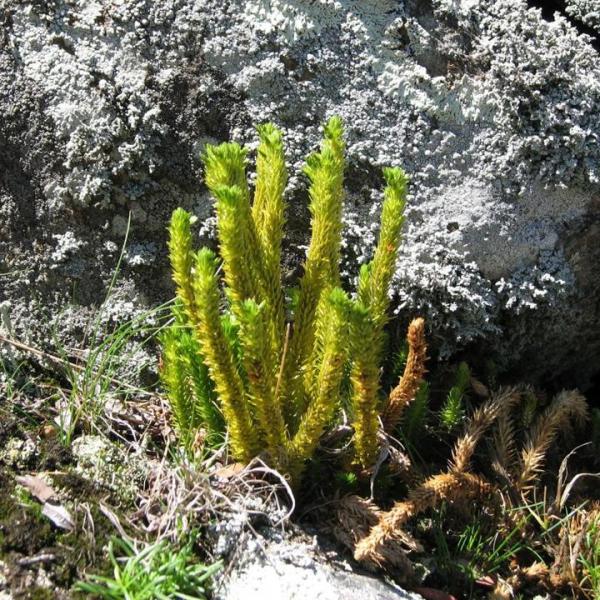
News Source
The lime-green flowers of the slender orchid known as the Small Whorled Pogonia used to bloom on forested slopes throughout New England, but they — and more than one-third of the region’s native orchids — are disappearing.
In all, 22 percent of all native plant species in New England are now either extinct, rare, or in a state of decline, strangled by invasive vines, trampled by incautious hikers, or drowned by man-made dams, according to a landmark report released Thursday by the New England Wild Flower Society .
The report also found that nearly a third of all the region’s plants are from elsewhere, and an increasing number are considered invasive, which means they are harmful to native flora.
“This is a sign that we’re not taking care of our ecological system,” said Debbi Edelstein, executive director of the New England Wild Flower Society in Framingham. “If the plants are in trouble, the food at our dinner table — and much more — is in trouble.”
Other examples of that trouble are the Smooth Cordgrass, the age-old protector of coastal marshes from erosion that is now threatened by rising sea levels, and Dwarf Ginseng, slow-growing herbs with tubular white flowers that have been overharvested for their reputed medicinal benefits.
The society’s 87-page “State of the Plants” report found that 593 out of nearly 2,500 native plants throughout the region are listed as rare, threatened, endangered, or are believed to be in decline.
The American sycamore.
Overall, the report found that 31 percent of all the region’s plants are not native to New England, while 10 percent of those, or 111 species, are considered invasive.
The report also found that 96 species of native flora have disappeared from New England, though they live elsewhere, and three native plants are now extinct: Kennedy’s hawthorn; which used to live near the summit of mountains in northern Vermont; Smooth-glumed slender crabgrass, which disappeared after being destroyed by hikers in southern New Hampshire; and Robbins’ milk-vetch, which perished as a result of the damming of the Connecticut River.
“When so many of our plants are becoming rarer, it doesn’t mean the others are fine,” said Elizabeth Farnsworth, a senior research ecologist at the Wild Flower Society and the author of the report. “They are the canaries in the coal plants.”
She expects that the number of plants declining or vanishing is likely to increase in coming years, especially as humans continue to burn fossil fuels and the climate changes.
Temperatures in Northeastern states have risen by 2 degrees Fahrenheit over the past century, and are predicted to soar as much as 10 degrees by the end of the century. That means common species in New England that can’t tolerate higher temperatures, such as sugar maple trees, are likely to begin dying off in large numbers, and lethal insects such as the hemlock woolly adelgid will proliferate, Farnsworth said.
Other flora in the region that are likely to disappear include Sandplain Agalinis, the victim of overdevelopment after millennia of bearing bright pink flowers on coastal plains, Farnsworth said.
The warmer weather is already bringing flora farther north, such as kudzu, noxious weeds that choke native trees and plants or deprive them of light by creating a dense canopy. In recent years, state environmental officials have reported finding a smattering of kudzu in eastern Massachusetts and Connecticut, Farnsworth said.
The loss of plants and the rise of invasive species is part of a worldwide phenomenon. The report cites a global survey by the International Union for the Conservation of Nature that found more than half of 19,000 species examined are considered at risk.
The report noted that nearly 13 million acres of land a year are being developed around the world.
Paul Smith, secretary general of Botanic Gardens Conservation International, an advocacy group that represents 500 botanic gardens around the world, said the worst losses are occurring in tropical countries such as Madagascar, which has lost about a third of its native plants in the past 30 years.
He said the problems are accelerating as the human population increases, development advances, and more carbon dioxide pours into the atmosphere.
Silver maple.
“The outlook is pretty grim,” Smith said.
He and others noted that the loss of plants means less carbon dioxide converted to oxygen, reduced cleansing of the air of pollutants, and diminished biodiversity, which will mean the loss of food sources and potential medical treatments.
Other findings of the report include:
■ The overpopulation of deer, increased reliance on dams, and widespread use of pesticides and herbicides, which kill pollinators and other insects, are taking a toll on the region’s plant diversity.
■ Declining species are most likely to be found in the region’s meadows; shorelines; and rocky areas such as cliffs.
■ After a century of rebuilding the forests of New England, which were decimated by logging, the region’s woodlands are declining again.
Lynn Harper, a habitat protection specialist at the Massachusetts Natural Heritage and Endangered Species Program in Westborough, called the report “sobering and shocking.”
“It’s not being alarmist or overblowing the situation,” she said. “We’re facing a really serious situation. Native plants are really facing a lot of threat.”